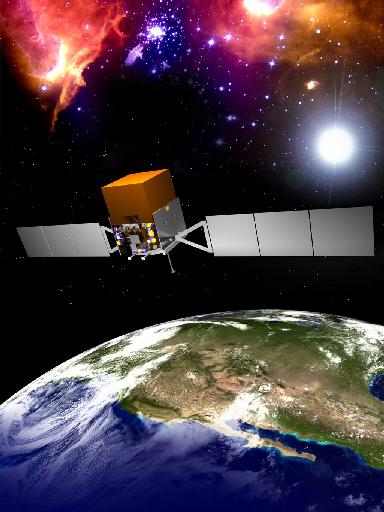[/caption] After a 60-day checkout period, science operations have begun in earnest for GLAST, the Gamma ray Large Area Space Telescope, which is now surveying the gamma-ray sky. Launched on June 11, 2008, the GLAST spacecraft has been undergoing calibrations of the two instruments on board, the LAT (Large Area Telescope) and the GBM (GLAST Burst Monitor) -- more details on the instruments in a moment. But during the checkout phase both instruments made significant observations of gamma rays. "Given that these detections were made with just the engineering data observations, the future is full of promise, and we are very excited," said Dr. Steve Ritz, GLAST Project Scientist in his GLAST blog. At the end of August, there will be a formal release of the first-light images taken by the spacecraft. Also at that time, NASA will rename the observatory. I don't know about you, but I'm sort of attached to the name "GLAST." But it will be interesting to find out its new, official name.
In June, LAT detected two extraordinarily bright, flaring sources in space, which scientists believe are very likely supermassive black hole systems at the cores of active galaxies, located far across the universe, but incredibly bright. Additionally, by the end of July, the GBM had detected 12 gamma ray bursts.
"We are thrilled to be detecting gamma-ray bursts so early in the mission. GLAST and the GBM are off to a great start!" said Charles "Chip" Meegan, GBM principal investigator at NASA's Marshall Space Flight Center, Huntsville, Ala. "The detectors are working well and we're really pleased with how the instrument is working. That said, we're using this checkout period to scrutinize the data coming down from the detectors and fine tune flight and ground software and our daily operational processes." [caption id="attachment_16874" align="alignnone" width="250" caption="GRBs detected by GLAST. Credit: NASA"]
[/caption] The LAT detects gamma rays and is able to make gamma ray images of astronomical objects. The GBM is designed to observe gamma ray bursts, which are sudden, brief flashes of gamma rays that occur about once a day at random positions in the sky. The GBM has such a large field-of-view that it will be able to see bursts from over 2/3 of the sky at one time. The observations made by GBM were verified by the Swift Telescope, another space telescope that can swiftly skew around to view a gamma ray burst.
NASA has a tradition of renaming spacecraft after a successful launch, and with GLAST they decided to wait until the "first light" images are released. Any guesses on what the new name will be?
Source:
GLAST blog
 Universe Today
Universe Today
